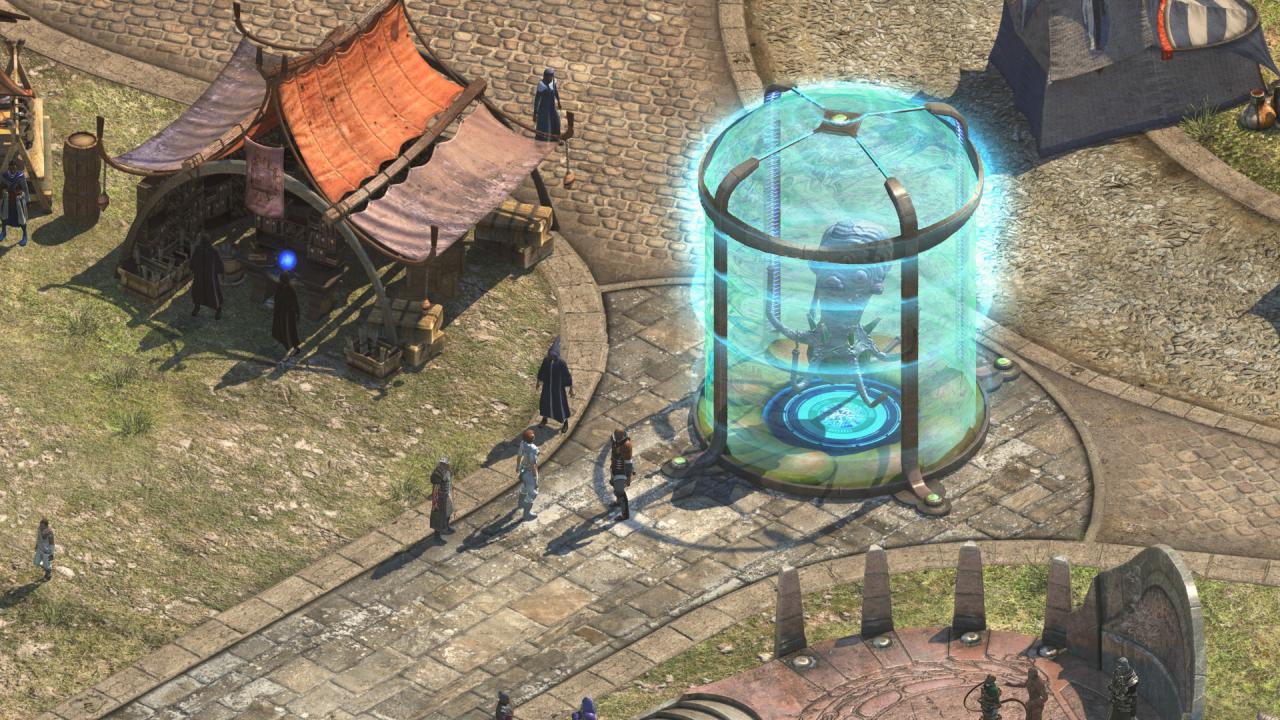
Still, Torment does try and make the best out of what it provides, giving you every piece of information on whichever space you’re standing in. As hinted at by the game, it would be impossible to see every dimension, every city, every weird mindspace that you might fall into, so the game only gives you a handful of those locales. Similarly, you don’t get to see all of Torment’s world. They all look human, even when their description tells you otherwise. If I have one complaint, it's one of distance - there are so many interesting creatures described in the text box and pictured on screen, but because of the top down, far-away perspective, I couldn't fully appreciate them. Learning about all the beings that lived in Torment added an allure and comfort to exploration. Not all of these characters are associated with quests, but seeing them walk around made me feel more a part of this universe. Torment’s pulled-out camera makes small details hard to appreciate The Mapper is covered in tattoos that seem to shift and change the more he learns, like his body is a living atlas. Loss-of-self is a woman on the edge of a cliff that looks oddly like a ghost you saw in a nearby tavern and also like a woman who died when a house collapsed. The Varrenoth, for example, is a giant, muscular robot - called a "construct" here - controlled by a small girl in an act of rebellion.
#Torment tides of numenera full#
Torment is full of diverse groups of seemingly discordant beings that only barely manage to live together and are all alternate takes on fantasy tropes. Exploring the different areas in Torment, like the seedy Underbelly or the sentient Bloom, is like taking a detour into the world of a China Miéville novel. There’s a lot to see to go along with all that reading. A lot of it isn’t necessary to finish the story, but considering how large the world presented is, the detail only makes it feel more real. There’s a lot of reading involved, with the game providing back story on even minor characters. Developer InXile Entertainment took the time to create backstories for minor characters that have little relevance in the greater plot. Torment takes a lot of deep dives into its own history, ensuring that the player can dig up details from every corner of the world if they wish to do so. What you choose guides your character's personality and decides how people react to you once you step out into the world. One memory puts you in front of a machine you have to fix while hostiles entrench on your position and you decide whether to repair it or run, for instance.
#Torment tides of numenera how to#
Presented with disparate memories from previous lives, you'll have to select how to react. You can’t tweak your character’s physical appearance beyond choosing gender, but you’re taken through a small journey to the past. With the Changing God moved on to a new body, you’re left to shape your own existence, which means that during character creation, you shape not only your stats but your personality. In Torment: Tides of Numenera - a spiritual successor to the 1999 cult classic role-playing game Planescape: Torment - you play as the "Last Castoff," a person who used to be a vessel for an immortal being called the Changing God. Its themes of mortality are not just nagging questions, but the elements that shapes the entire game. It creates a rich environment to explore, but it forges a scenario that is well-paced to become more confusing as time goes on. But what separates Torment is how complicated its answers become.


It’s easy to make assumptions about Torment’s purpose in regards to this problem, since video games have been posing similar questions for years. But what about the life of the mutant that fishes all day? What about the woman who’s been accused of a crime? What about the lives of your brothers and sisters? The lives of your allies matter, since they’ll be your support throughout your journey. Your character's life matters, obviously, since you have to play with him or her for a number of hours. The central question presented in Torment: Tides of Numenera is somewhat simple: How much does one life matter?


 0 kommentar(er)
0 kommentar(er)
